This is a Yashica-D twin lens reflex camera made by Yashica Co., Ltd. between the years of 1958 – 1972. This particular model is a later variant, likely made in 1970 with the company’s top of the line 4-element Yashinon lenses and f/2.8 viewing lens. The “D” represented Yashica’s top of the line, knob wind, meterless TLR. In production for over 14 years, it sold extremely well and although they are still a relatively common camera on the used market, they are very desirable by collectors and photographers alike for their great build quality, reliable operation, and excellent optics.
Film Type: 120 Roll Film (12 exposures 6cm x 6cm per roll)
Lenses: (taking) 80mm f/3.5 Yashinon coated 4-elements, (viewing) 80mm f/2.8 Yashinon coated 4-elements
Focus: 3.3′ (1m) to Infinity
Type: Coupled Reflex Viewfinder
Shutter: Copal MXV Leaf
Speeds: B, 1 – 1/500 seconds
Exposure Meter: none
Battery: none
Flash Mount: PC M – X Sync
Manual: http://www.cameramanuals.org/yashica_pdf/yashica_d.pdf
History
The Yashica camera company originally started as two separate Japanese companies both who made cameras along with other products.
In 1940, several ex employees of Canon formed a new optics company called Kōgaku Seiki. In 1942, they released their first model, the Nippon, which was a Japanese clone of the popular Leica III camera.
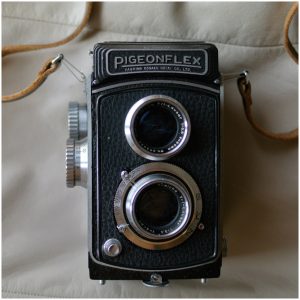
Meanwhile in 1949, the Yashima Seiki Company was founded who primarily made electronic parts for clocks. They eventually expanded their portfolio and started making camera related parts. In 1953, they released their first camera, the Pigeonflex, which was based off another German camera, the Rolleicord. In 1948, Kōgaku Seiki Company changed its name to Nippon Camera Works, and a year later changed it again to Nicca Camera Works. The company continued to build 35mm rangefinder cameras with the M39 screw mount, like the Leica. These early Nicca cameras did not sell in large volumes, but they remain valuable collector’s items today.
Although both the Yashima and Nicca companies made good cameras, after Japan’s defeat in World War II, not many people outside of Japan were interested in a Japanese copy of a German designed camera. Despite their success at making good cameras, both companies struggled to sell their models in large volumes.
In 1958, Yashima would acquire Nicca Camera Works. They combined the resources of both companies and changed their name to Yashica Co., Ltd. which itself was a combination of both company’s names. Yashica would continue to release new TLR and 35mm rangefinder models concurrently.
Yashica’s TLR models were already well established in the market by the time of their merger and they already had a wide variety of models available. From 1953 to 1956 Yashinon would release no less than 15 different models with subtle differences from each other, but all featuring a knob wind film advance. In 1957, the Yashica-Mat would make it’s debut, featuring the company’s first crank wind film advance with auto cocking shutter. The Yashica-Mat would also borrow the twin speed and aperture selection wheels from the Rolleiflex’s design. While not identical to the Rolleiflex, the Yashica-Mat represented the closest to a Rollei clone the company would make. The Yashica-Mat would be a highly successful model, in production from 1957 until at least 1973. After it’s release, all future Yashica TLRs would be grouped into two major categories, those with knob wind or those with crank wind.
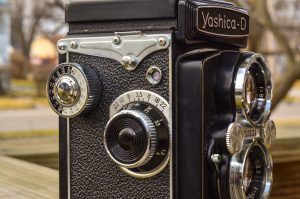
Perhaps in an attempt to simplify their product offerings under the new Yashica corporate name, the company would discontinue most Yashima made TLRs and release 3 new models all in 1958. They kept the earlier Yashica-A which would continue for at least another decade as an entry level model, but they would add the Yashica-B, Yashica-D, and Yashica-635 models all with different specs. I won’t bother explaining the differences between all of the Yashica TLR models as Paul Gokk has already done that for you with his excellent Yashica TLR site.
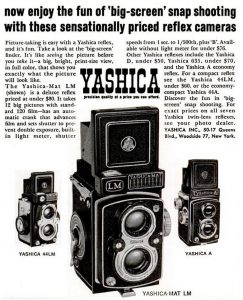
The Yashica-D would represent the top of the line knob wind model and would feature most of the other enhancements of the Yashica-Mat including the Rollei-esque shutter speed and aperture control wheels, Bay 1 filter mounts, Copal-MXV shutter with speeds from 1-1/500 seconds, and an integrated frame counter. According to the advertisement to the left from a 1962 issue of Time Magazine, the Yashica-D sold for under $50 (which I assume to mean $49.95). When adjusted for inflation, that would be like $400 today.
Today, the Yashica-D remains a popular choice for collectors and film photographers alike. The later variants like the one pictured here are the most desirable for their upgraded lenses. Many people will still prefer the Yashica-Mat 124G for it’s coupled CdS meter, but the Yashica-D is a well designed, all metal camera, that offers an easy to use, fully mechanical experience
Long Winded Story About How I Got This Camera
The Yashica-D was actually an early target of mine when I sought out my first TLR, the Yashica-Mat in early 2015. I had read numerous reviews saying that when it came to meterless Yashica TLRs, these two offered the best compromise between value and performance. Sure the Yashica-Mat 124Gs were the most sought after, but they were also the most expensive.
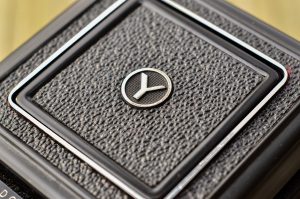
Of course, I came across a Yashica-Mat first, and that turned into one of the very first reviews done on this site. As my journey collecting film cameras grew, I learned that I didn’t quite enjoy the TLR experience as much as I thought I would. Sure, I added more models to my collection like the Ciro Flex D, Argoflex EF, and the Flexaret VII, but it just wasn’t a format I loved.
So it was with great trepidation that I came to own this Yashica-D…two of them actually. In a strange twist of fate, I saw a local auction for four different Yashica-Ds, all later examples, and all looking to be in above average to excellent condition.
Now, pardon me for a moment while I gloat. Everyone who has been in this hobby from time to time runs across the deal of a lifetime, be it a $50 Leica, Olympus OM-4 Ti, or some other highly valuable camera for an insanely low price. When that happens, said recipient often posts on his or her favorite Facebook group or forum with a picture of their newfound acquisition with the satirical phrase, “Did I go good?”
In my time collecting cameras, this was probably my biggest moment of bargain hunting nirvana. I won both Yashica-Ds for the total combined price, with shipping, for $110. My thought was, I should have no problem unloading one of them for $75 – $100 and nearly breaking even, or at least lowering the total spent on one to a small fraction of it’s value.

Upon receiving them, the cameras weren’t in above average condition like I had hoped. No, they were in near mint condition. I had never seen old cameras like these in such fine shape. They had been used for sure, but hardly. Whoever had these cameras clearly took excellent care of them. I dated both of them and one was a ~1971 model with Yashinon f/2.8 viewing lens, and black locking knob on the bottom of the camera, and the other was this 1970 model with the chrome knob. Both cameras came in their original cases, and while the 1971 one had a beautiful brown leather case in pristine shape, I actually preferred the black leather one with a handy exposure guide typed on yellowed paper, taped to the back. I felt that this bit of original owner customization was a neat reminder of how things used to be done.

Looking at the two near-mint condition Yashica-Ds sitting side by side, I had a moment of weakness when I entertained the possibility of keeping them both, but no, I needed to sell one to recoup some of my money, so off to eBay went the 1971 camera. I went through the camera, checking all the speeds, and wiping off what little dust was on it, and I took a dozen well lit photographs and spent a good half hour making a really nice looking eBay listing. As I say in my “What is my Camera Worth” post, a really good way to increase the selling value of a camera, is to put some effort into a good listing.
I set an opening bid of $100 and let it ride. If somehow I didn’t get $100, I would relist for $75 and hope for the best.
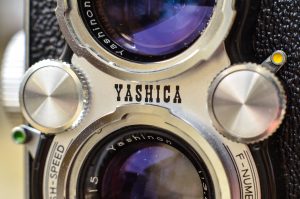
Seven days later, my phone beeped to notify me that my camera had sold…for $185. I couldn’t believe it had gone that high. At first I was thrilled, but then the panic set in that this might be a seller who overbid and would never pay. My fears were quickly diminished as within an hour, my phone beeped again to notify me that a PayPal payment of $185 + whatever shipping was, was received.
I packaged the camera as best as I could, deserving of such a beautiful example and shipped it off to the buyer. A couple of days later, I received positive feedback and the seller notified me they were happy with their purchase.
Coming back to my claim of bargain-hunting nirvana, I was left with this 1970 Yashica-D in near mint condition, that cost me a grand total of negative $75! Its like someone paid me $75 to take their camera off their hands.
My Thoughts
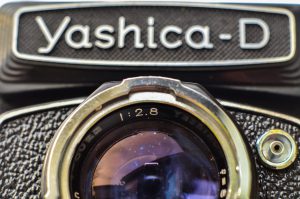
There’s not much I can say about the Yashica-D that isn’t already well documented online. This was Yashica’s top of the line, knob wind camera. It is an extremely handsome camera with controls in all of the places you’d expect to find them. It is fully mechanical, with no meter, and no electronics. There is a frame counter to help you keep track of your exposures without having to rely on a red window, but unlike the Yashica-Mat, winding the advance knob does not cock the shutter. You must cock the shutter by pressing down on the green tipped lever on the left side of the lens (photographer’s right side). This means that the camera has no double-exposure prevention and you must pay special attention to remember to advance the film after every shot. If you are a fan of double exposures, then this camera makes it easy for you to do.
An upside to not having this self-cocking linkage inside of the camera is that film advance is much smoother on the Yashica-D than the Yashica-Mat or other self-cocking TLRs. I even commented in my review of the Flexaret VII that advancing the film has a lot of resistance. You can “feel” the linkages and gears inside of the camera turning to move the film, the frame counter, and cock the shutter. In the Yashica-D, advancing the film is a smooth and easy process.
Towards the end of TLR production, Yashica upgraded the taking lens from a 3-element Yashikor to a 4-element Yashinon. Both lenses were f/3.5, and the Yashikor was certainly no slouch, but that Yashinon represented probably the best lens on a TLR not made in Germany.
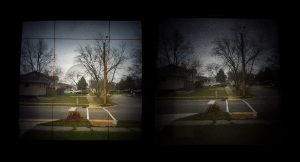
The viewing lens was also upgraded to a f/2.8 Yashinon. The larger aperture meant that more light could enter the viewfinder to increase brightness. The viewfinder on the Yashica-D was already quite good, but the one with the f/2.8 viewing lens is almost illuminating. In bright scenes, it seems like you are looking at a mini TV screen in there. The difference between the viewfinder on this camera, compared to an earlier TLR like the Argoflex or Ciro-Flexes is night and day (pun intended). Look at the image to the left. I shot both using identical exposure settings to get an accurate comparison of the brightness of the Yashica-D’s viewfinder compared to the one in a Ciro-Flex D.

Using the rest of the camera is pretty standard fare for TLRs. Yashica has a nice system where two round knobs on each side of the lenses are used to change the shutter speed and aperture size. A small window above the viewing lens facing the sky shows the selected settings.
The flip up viewfinder has both a magnifying glass for precision work, and a sports finder for quick shots. The ground glass inside of the viewfinder has a Fresnel screen to improve brightness and several vertical and horizontal grid lines to help level and compose your shots.
Handling the Yashica-D is a pleasure, and despite it’s all metal design, Yashica still managed to keep the weight down. According to my wife’s kitchen scale, the camera weighs 925 grams without any film loaded. This is down from the Yashica-Mat’s weight of 1093 grams, likely due to the less complex film transport system inside the camera.
There’s only two things you should be aware of when handling a Yashica-D which are well documented on the Internet, but this review wouldn’t be complete if I didn’t warn you. The first is merely a note, but the second is a very important warning. I’ll start with the note first:
NOTE: There is a commonly held belief that you cannot change shutter speeds after cocking the shutter on the Yashica-D. This is confirmed on page 5 of the user’s manual which specifically advises you not to change speeds after cocking the shutter, but doesn’t explain why. Further adding to the confusion is that this is not a requirement of pretty much any other leaf shutter camera, even those with Copal shutters. In a daring move, I tried changing the shutter speeds after cocking my shutter and it worked fine no matter what speeds I selected. I guess I should probably heed the warning of the manual and since cocking the shutter should generally be done immediately before taking the photo, there’s really no reason to tempt fate, so it’s probably wise to listen to the manual and not mess with the speeds after cocking the shutter.
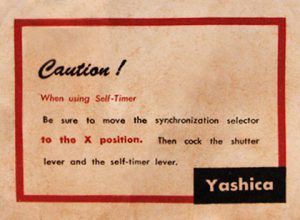 WARNING: The Copal-MXV shutter on the Yashica-D absolutely will not allow the self-timer to work with the flash sync lever in the ‘M’ position. It must be in the ‘X’ position or you will damage the camera requiring it to be serviced. There is a mechanical lockout which is designed to prevent you from doing this, but some people may try forcing it, which will damage the shutter. This isn’t an internet perpetuated urban legend, the original Yashica-D user’s manual specifically tells you this. So seriously, don’t try it. If you encounter a non-working Yashica-D, it is highly likely because of this very reason.
WARNING: The Copal-MXV shutter on the Yashica-D absolutely will not allow the self-timer to work with the flash sync lever in the ‘M’ position. It must be in the ‘X’ position or you will damage the camera requiring it to be serviced. There is a mechanical lockout which is designed to prevent you from doing this, but some people may try forcing it, which will damage the shutter. This isn’t an internet perpetuated urban legend, the original Yashica-D user’s manual specifically tells you this. So seriously, don’t try it. If you encounter a non-working Yashica-D, it is highly likely because of this very reason.
In case you are wondering why the Self Timer and M-sync setting don’t work together, here is a comment I found on a blog from a man named Tom Heckhaus who says:
Hi, I’ve been collecting Yashica TLRs for over 40 years and have also repaired many of them. The problem with the broken ST is very common. Anyone who has a working shutter either an MXV or an SV can observe this. Firstly the ST will only work when the M-X sync lever is set to X. If you look into the little slot where the ST lever moves, and set the M-X lever to M you will see a small metal gate come up to block the ST lever. That’s because part of the ST is used to provide the delay in the M sync. When the M-X is set to X the gate stays up but it’s designed so the ST lever pushes the gate down, resetting it. When the M-X is set to M usually someone will “FORCE” the ST lever, that bends the metal blocking gate and jams it into the shutter housing. The only solution is to remove the ST as Dave has done on his model “D”. Even a replacement ST will not work as the gate is bent. I’ve tried straightening out this gate with no luck.
So now that the Notes and Warnings are out of the way, you should be well prepared to shoot with the Yashica-D. It has what I consider to be the best balance of simplistic and reliable design, one of the brightest viewfinders ever on a TLR, and an amazing taking lens. While the -mat series were undoubtedly more feature rich, they also had more complicated linkages inside of the camera that were more likely to fail over time.
Because of this combination of great specs and simple, yet reliable design, the Yashica-D is highly regarded as one of the company’s best TLRs.
My Results
For my inaugural roll through the Yashica-D, I took it with me to visit family in northern Michigan around Easter. I took the camera to Mackinaw City, Michigan and shot most of the pictures there. I used Portra 160 film as it was the only color 120 film I had in stock at the time. I split the roll between brightly lit snowy scenes of the downtown area of Mackinaw City and one of the Mackinac Bridge, and then some inside of a church prior to Easter service.
My expectations were quite high with this camera. Knowing what to expect using my Yashica-Mat, and knowing that the Yashinon 4-element lens should be better, and knowing that this camera was in nearly mint condition, I can say that every image from that roll came out as perfectly as I think anyone could have made them.
I did double expose the first image on the roll which is a good reminder that this TLR needs to be advanced and cocked separately. This isn’t something I am not used to on other vintage cameras, but if you were to shoot a Yashica-D back to back with a Yashica-mat, Rolleiflex, or any other number of self cocking cameras, you would need to pay extra special attention to get the steps correct.
One thing that’s interesting about reviewing these old cameras is that because of their age, many of the comments I make may not have been applicable when they were new. Even the best cameras will have some degree of wear and tear over time. I might make conclusions about a particular model that only applies to the specimen I used. It’s plausible that in some instances, things I comment on might not have been true when these cameras were first made.
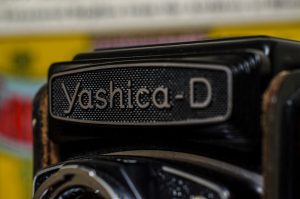
I can honestly say this Yashica-D is in the best condition of any camera in my collection. It’s the only one I can truly describe as “near mint”, and I think that is significant as it gives me the best idea of what this camera might have been like when it was new. I truly believe that the images shown above are representative of what any Yashica-D would have been capable of in the years they were current models.
Overall, the Yashica-D represents the pinnacle of TLR ownership for me. I don’t often shoot with them, but I can honestly say this one is my favorite TLR in my collection. There are certainly more valuable models out there, but I would challenge any owner of a German made TLR or other desirable models like the Minolta Autocord or ANSCO Automatic Reflex to show me that they can make better looking images in a camera with as bright of a viewfinder, and with this level of excellent build quality. My luck of getting this camera for -$75 is likely not to happen to anyone again, but I would feel safe in saying that any price under $100 for a good looking and working model is money well spent.
My Final WordHow these ratings work |
The Yashica-D is one of the most popular TLRs out there for a reason. It has one of the brightest viewfinders on any TLR ever made, the 4-element Yashinon lens is as good as they come, and the simpler design of the film transport eliminates some of the failure points that plague other TLRs. It not only was one of Yashica’s best designs, but it’s also a relative bargain compared to some other TLRs out there like the Rolleiflex. Tne Yashica-D was in production for a decade and a half meaning there are tons of them out there, but if you have the opportunity to snag one of the later models with the 4-element lens and the f/2.8 viewing lens, I highly recommend it. | ||||||
| Images | Handling | Features | Viewfinder | Feel & Beauty | History | Age | |
| 2 | 1 | 1 | 2 | 2 | 1 | 20% | |
| Bonus | +1 for outstanding craftsmanship, nearly perfect design, sharp lens, and one of the best viewfinders on any TLR, ever | ||||||
| Final Score | 11.8 | ||||||
Additional Resources
http://camerapedia.wikia.com/wiki/Yashica-D
http://camera-wiki.org/wiki/Yashica_D
http://mattsclassiccameras.com/tlr-box/yashica-d/
http://ratfactor.com/yashica-d-tlr-copal-mxv-shutter
http://www.tlr-cameras.com/japanese/Yashica.html
https://www.flickr.com/groups/1155868@N23/

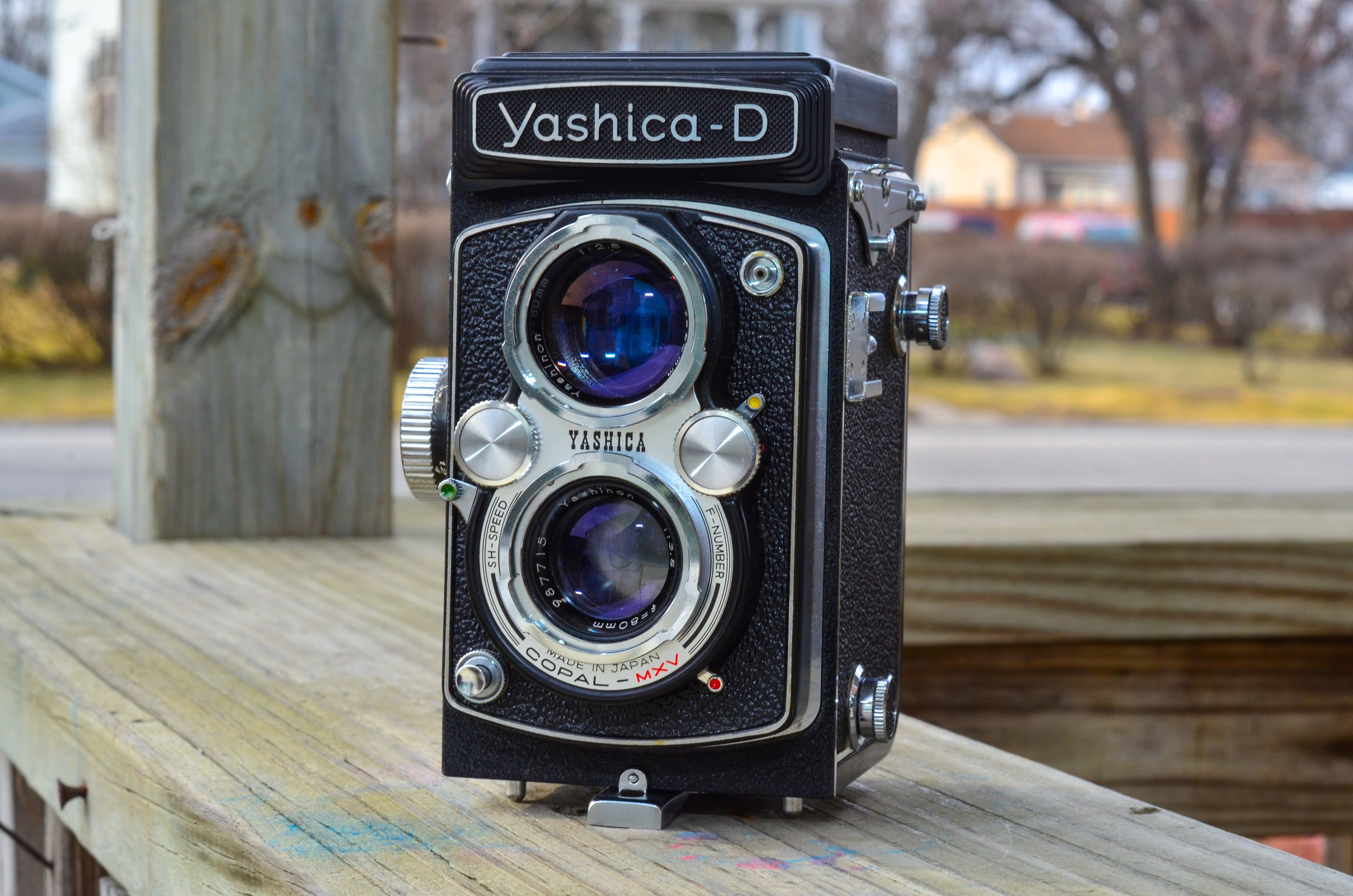
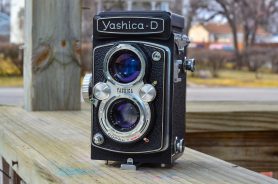
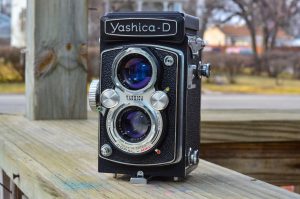








I have this camera with the Yashinon, I too got mine in near-mint condition with an ever-ready case no less.
Love the review and could not agree more.
Hello Mike,
It’s now 2019 and so I wonder if you will read this after so many years.
I found your article this morning as I decided to give my Yashica D another go at taking photos and needed to refresh on how to use it.
I bought it 4 years ago from our local charity shop to £5.00 and initially more as a curiosity collectable item. Little did I know then it’s true value in now looking on eBay to see what they are selling for. And the condition of mine is also excellent.
Anyway today I want to run another ASA400 Ilord film to see if j can get it right this time. Last 2 rolls I botched most of them from not winding on correctly and poor exposure.
But I mainly write to say j liked your post here very much and thank you for writing it.
Best regards
Dinah
Hi Dinah! I still do read the comments of every post that I’ve ever made! Glad to hear you’re going to give your Yashica D another chance! Assuming the shutter is working correctly, getting proper exposure should be pretty easy. With Ilford 400 film in it, just set the shutter speed to 1/250 and leave it there for your entire roll. Use the camera outside and if you’re in bright, direct sunlight, set the aperture to f/16. If there’s sunlight, but a little cloudy or hazy out, set it to f/11, if the sky is overcast with no direct sunlight, use f/8, and if you’re in shade, use f/5.6. Those numbers will get you close enough to where your film should produce excellent results!
Hello Mike,
Thank you for replying and more so for the the valuable tips on proper film exposure with the 400 film in it. It will prove very helpful.
I received an email from WordPress to say you were requesting access into my website which I thought rather strange until I came to find it’s my old and original site which I am currently re-building so it’s not fully public yet.
But thank you for your interest and perhaps then you’d like to visit my other “proper” site which has all sorts in it.
http://dinahbeaton.co.uk
It also needs updating which I am currently working on as well.
So nice to hear from you and I thank you for your interest and your help.
best regards
Dinah
Hi,
Do you know what gadgets or accessories available that I can use to take double exposure? I have a Yashica 635. Thanks
Kai, sorry, but I do not have the Yashica 635 to be able to tell you. I would recommend checking Mike Butkus’s site for the 635’s user manual. It will likely tell you how to get double exposures.
Hello! Sad to say that for many years cherished a yashica_-D which belonged to my deceased husband. Loaned it for a good purpose, Was returned to me but not directly and ended up in a charity box, Still looking to replace it at a reasonable price. Upset and heart broken. My husband did weddings and enjoyed every moment using his camera.
Greetings Mike, re the change of shutter setting after cocking the shutter; better done with shutter not cocked, but if it has been, then as long as you don’t cross between 1/15th and 1/25th, it is acceptable to change settings in the range either side of that, but do so SLOWLY and GENTLY! As to why, happy to give the longer definitive explanation if it’s of any interest! It’s always intrigued me that it remains a mystery but is never explained.
Cheers,
Greg